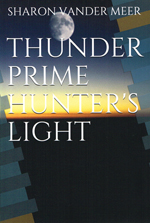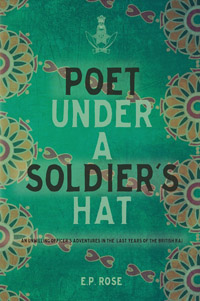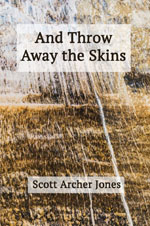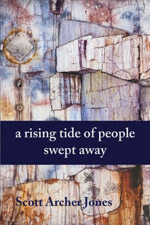Jacqueline Murray Loring is a playwright, screenwriter, and poet. She is the 2012 winner of the Doire Press Irish International Poetry Prize for her collection The History of Bearing Children. Also an editor/author, she has contributed to several other books including The Storyteller’s Anthology (2013) and KiMo Theatre: Fact & Folklore (2019), both publications of SouthWest Writers. In June 2019 McFarland Books released her newest project, Vietnam Veterans Unbroken: Conversations on Trauma and Resiliency. You’ll find Jacqueline on her website JacquelineMurrayLoring.com.
 Who did you write Vietnam Veterans Unbroken for?
Who did you write Vietnam Veterans Unbroken for?
In 2012, when I first began to interview in-country Vietnam Veterans for this book, I would have told you I was writing the book to give Vietnam veterans a vehicle whereby they could share their life experiences with newer veterans and offer new vets a chance to learn from their trials and successes. That’s right, but simple answers frequently disguise complicated truths.
The nuance between your question (Who did I write the book for?) and a question my publisher asked me in 2018 (Who will read the book?) forced me to consider why a reader would be interested in a book about Vietnam veterans written by a non-military woman. I dug more deeply into my personal motives and the promise writing the book made to the reader. I had to tell the stories in a way that would be appreciated by both fiction and nonfiction readers.
During the getting-ready-to-publish phase, McFarland & Company Inc., Publishers, sent me a form that asked a similar question, “What do you see as the books primary, secondary, and tertiary markets?” After intense research, I listed my markets as History–United States, Military History, War, Vietnam War. I also chose Social Sciences–Human Services and Body & Mind–Health. As I researched, I knew the book would appeal to veterans and their families, as well as military history buffs, colleges/university students, and a host of non-military readers. Self-help book readers would include veterans and healers, and non-military women with lingering questions about the soldiers they shared their lives with. I also included the children of Vietnam veterans who in their 40s are questioning how their parent’s time in Vietnam may have affected their youth.
After all the interviews, the writing and editing, the research and market dissection, the answer I was looking for came in response to a question asked of me at a presentation I did in May 2019 for the Albuquerque Veterans for Peace. A non-veteran woman asked me if I’d found the answers I was searching for when I started the book. In front of a room full of veterans, their wives/husbands, family members, and guests, I finally took that internal journey. My answer to her was, “Maybe. Partly.” The answer to your question is I’m still looking for the answer.
What unique challenges did this work pose for you?
The first challenge that presented itself in 2012 was the surety that I couldn’t write the book. I’m a poet, a screenwriter, a storyteller. I write fiction. When you create a story, you can enjoy the fun of making up characters, dialogue, situations, locations, plot. The writer decides who is good and what situation is to be avoided. Telling the truth is difficult and complicated and demands attention to factual details. I wasn’t sure I possessed that discipline. Nonfiction requires you know your subject, research constantly, have an end game before you begin as to where the truth will take you. Not for the faint of heart, I discovered.
Beyond that, I didn’t want to write the book. I wanted the veterans in Vietnam Veterans Unbroken: Conversations on Trauma and Resiliency to tell their own stories. This took nonfiction writing skill to a complicated and unwieldy place. My plan? Let the veteran’s lives unfold on paper without interference from the thoughts, ignorance, preferences, or prejudices of the writer. The title tells the reader they are about to have a conversation with a veteran. For me to be successful in writing this book, I wanted the reader to envision themselves sitting comfortably across from a vet, sipping coffee, listening to the vet talk about Vietnam, and finally hearing about life after war.
But before that gathering of stories began, I had to find Vietnam veterans who would confide in a stranger intimate details of their lives. For me, asking them to share their war experience after 40-plus years was stressful and delicate.
What prompted the push to begin the project?
In 2011, my husband asked me a difficult question for which I had no answer. He wanted to know why more than a dozen of my editorial clients had published books but my plays and poetry remained hidden in my computer. I thought, “Surely, no one was interested in the moaning/groaning of the wife of a Vietnam veteran.” To prove this to him, I sent poems and stories to every listing in the “Deadlines” section of Poets and Writers Magazine (Jan/Feb 2012 issue). By March, my poems were accepted by three magazines. In April 2012, I received a call from Ireland saying my work, The History of Bearing Children, had won an international prize and publication of a chap book. I was headed to Galway for the book’s launch and an opportunity to read in places like Galway, Westport, and Achill Island. My husband was right, I needed to write about a subject I knew well—surviving the peace after war.
Tell us how the book came together.
In 2012, my Vietnam veteran husband and I lived in Cape Cod, Massachusetts where he was president of the Nam Vets Association of the Cape and Islands in Hyannis. The board of the association allowed me to place a notice in their newsletter that asked for volunteers to be interviewed for a new book. All the veterans self-selected. Most of the interviewees did not know me. At first, they had no reason to trust me or my reporting. Most of the vets I met with stayed with the project, but a few found remembering to be too difficult.
Initially, I sent the veterans informal questionnaires asking for family facts and military dates. From there, I preceded to personal interviews, more questionnaires, and dozens of emails and phone calls. The impersonal tools of questionnaires, phone calls, and emails worked well to gather information, but I found observing body language (especially with the vets I didn’t know) to be an important element in interviewing. Before my husband and I moved to Albuquerque, New Mexico in 2012, I invited a dozen veterans to a Cape Cod cable access television station to be interviewed and taped. The recorded panel lasted several hours and was hosted by Jack Bonino, the counselor at the Nam Vets Center in Hyannis. With Jack’s support, the veteran’s discussions were frank, emotional, confessional, intimate, and on occasion, angry. Jack made himself available to those veterans after the panel if they needed to talk privately. In 2014, I returned to the Cape to conduct one more round of intense interviews.
 For the next three years back in Albuquerque, I transcribed the in-person interview questions as well as all the taped interviews and edited more than 200,000 words. I knew early on I wanted to divide the veterans’ life experiences into four categories: before Vietnam, experiences upon returning home, and an overview of the past 40-plus years. The end of their stories would be their feeling of reaching out to newer veterans. It took me four months to write a 30-page book proposal. (During the years it took to complete Vietnam Veterans Unbroken, I wrote and/or edited other books including The Storyteller’s Anthology and KiMo Theatre: Fact & Folklore for SouthWest Writers.) I researched and wrote query letters to agents, university presses, and publishing houses. I received 42 rejections before McFarland offered me a contract in April 2018. On September 1 of that year I delivered the manuscript to the publisher. The book was released in June 2019.
For the next three years back in Albuquerque, I transcribed the in-person interview questions as well as all the taped interviews and edited more than 200,000 words. I knew early on I wanted to divide the veterans’ life experiences into four categories: before Vietnam, experiences upon returning home, and an overview of the past 40-plus years. The end of their stories would be their feeling of reaching out to newer veterans. It took me four months to write a 30-page book proposal. (During the years it took to complete Vietnam Veterans Unbroken, I wrote and/or edited other books including The Storyteller’s Anthology and KiMo Theatre: Fact & Folklore for SouthWest Writers.) I researched and wrote query letters to agents, university presses, and publishing houses. I received 42 rejections before McFarland offered me a contract in April 2018. On September 1 of that year I delivered the manuscript to the publisher. The book was released in June 2019.
What was your favorite part of seeing Vietnam Veterans Unbroken completed and published?
McFarland & Company, Inc., Publishers is a leading independent publisher of academic nonfiction. I am thrilled and honored to be one of their clients. Their contract stipulates they are responsible for the cover art and the title. Originally, I called the manuscript Project Resiliency: Conversations with In-Country Vietnam Veterans. I trusted McFarland’s design team when they said they had an idea for a cover and a new title. After all, they were brilliant enough to accept my manuscript for publication. Right? When the email came with the new title, I was stunned. I think I emailed McFarland within minutes with, “Yes, the title is acceptable.” They couldn’t see I was breathless. Then the cover art arrived, and I was again taken aback. I took a moment to brush away tears before I responded. McFarland had chosen a photograph for the cover from the 90 I had submitted for inclusion in the book. They could not have known that photo was of Preston H. Hood III, a Vietnam veteran friend since the late 1980s. Preston and I met at the summer writers conference at UMass Boston’s Joiner Center for the Study of War and Social Consequence. He and I read poetry at veteran occasions including several Vietnam Veteran Moving Wall events in New England. We teach at colleges together and have read to hundreds of community members. Preston is an award-winning poet, speaker, educator, mentor, and an inspirational person. I’m expecting the book’s launch on Cape Cod in July 2019, with all the interviewed veterans, to be a major moment.
Was there anything surprising you discovered while doing research for the project?
The whole process was more difficult than I expected, especially interviewing. I also learned: 1) writing nonfiction is truly an art form; 2) nonfiction book authors must compose the index; 3) the last edit of a manuscript is excruciatingly stressful, demanding, and time consuming; and 4) gaining permission to use a quote for the epigraph takes months.
Do you have a favorite quote from the book?
Many of the memories shared with me by the veterans will stay with me every day of the rest of my life. Forty-plus years after returning from serving his country in Vietnam, Peter O’Donnell (U.S. Marine Corps) told me, “No Red Sox games for me! Stop & Shop? Only after it was near empty. One artillery shell would get us all.” Matt Ribis (U.S. Army) said, “After Nam, I played guitar and sang in night clubs. And I clowned. I clowned professionally. It was a great thing for me to live in anonymity. It let my soul breathe. I could go up to a kid and not worry if his parent had a grenade.”
What is the best compliment you’ve received as an author?
A beta reader told me the sections of the book were perfectly organized. Another reader said the sections written by a Vietnam nurse brought him to tears. Another reader said the discussions by the vets describing the discrimination they received from World War II and Korean War veterans broke his heart.
You’re also a screenwriter and playwright. What is it about these forms that draws you to them?
If I had to label my writing preference and process, I’d claim (should I be so bold?) to be a poet. Writing poetry forces me to find that one exact word to express a complicated emotion or event. I think I bring that discipline to the dialogue I use in my movie scripts and stage plays. Exact, powerful, and unexpected nouns and verbs draw the reader into the emotion or the surprise of the poem. The best dialogue is short, specific, gripping, and unexpected. Each word must carry the weight of expressing exactly what the situation requires. If that one word is perfect, additional words, sentences, paragraphs are superfluous. Exactly the opposite of writing a novel. Finding that one word (or words or line) is such pleasure. That feeling keeps me heading back to my writing room each morning. I think writing poetry should be the first building block a fiction or nonfiction writer plays with.
What started you on your writing journey?
In my junior year of high school, my civics teacher told me to forget my intended career as a nurse and look into politics or writing. Took me years to heed her advice. I bless her every time I remember.
What writing projects are you working on now?
My next project is something to make me smile. I’m turning a movie script into a stage play. BUT…If I had a financial backer, I’d write a companion book to Vietnam Veterans Unbroken: Conversations on Trauma and Resiliency where the spouses, children, and family members of Vietnam veterans tell their truths about life lived with a Nam vet. That’s the book that hasn’t been written. I’d love to be the author. But it took me eight years to write and publish this book. 76 plus 8?
 KL Wagoner (writing as Cate Macabe) is the author of This New Mountain: a memoir of AJ Jackson, private investigator, repossessor, and grandmother. Kathy posts to a speculative fiction blog at klwagoner.com and writes about memoir at ThisNewMountain.com.
KL Wagoner (writing as Cate Macabe) is the author of This New Mountain: a memoir of AJ Jackson, private investigator, repossessor, and grandmother. Kathy posts to a speculative fiction blog at klwagoner.com and writes about memoir at ThisNewMountain.com.
 What is your elevator pitch for Kato’s Grand Adventure?
What is your elevator pitch for Kato’s Grand Adventure? Tell us how the book came together.
Tell us how the book came together. KL Wagoner (writing as Cate Macabe) is the author of This New Mountain: a memoir of AJ Jackson, private investigator, repossessor, and grandmother. Kathy posts to a speculative fiction blog at klwagoner.com and writes about memoir at ThisNewMountain.com.
KL Wagoner (writing as Cate Macabe) is the author of This New Mountain: a memoir of AJ Jackson, private investigator, repossessor, and grandmother. Kathy posts to a speculative fiction blog at klwagoner.com and writes about memoir at ThisNewMountain.com.















